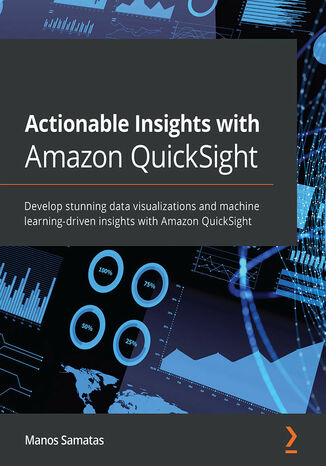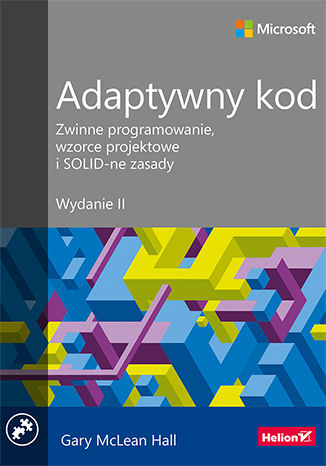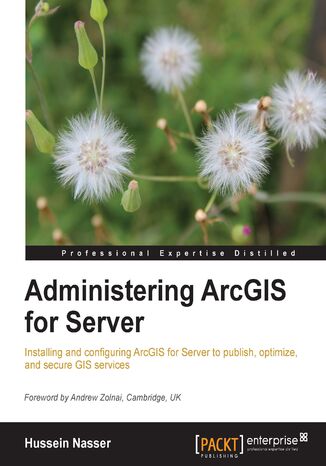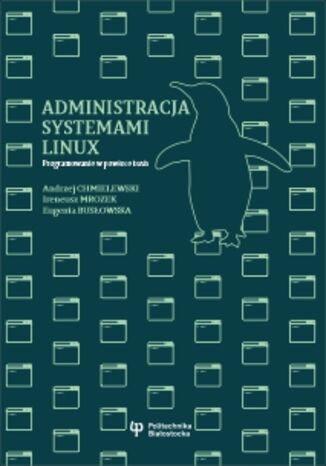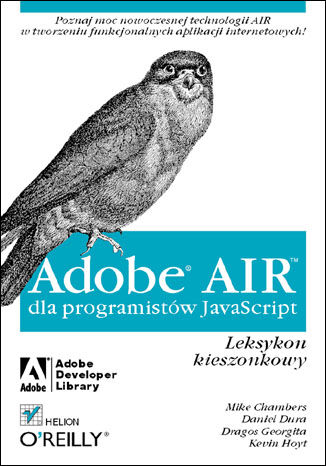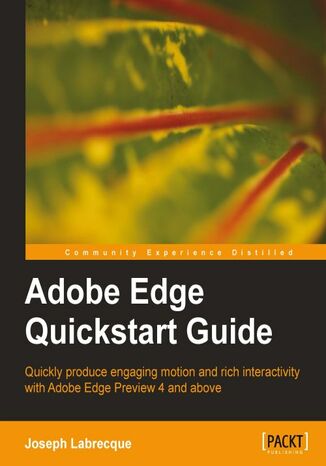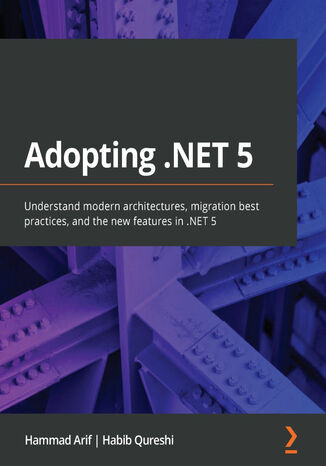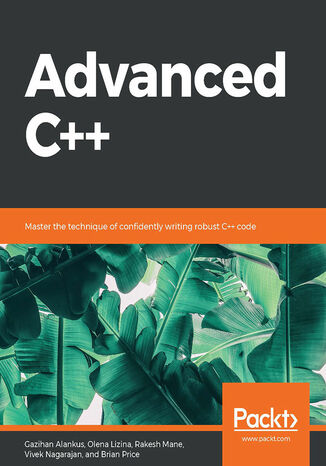Categories
Ebooks
-
Business and economy
- Bitcoin
- Businesswoman
- Coaching
- Controlling
- E-business
- Economy
- Finances
- Stocks and investments
- Personal competence
- Computer in the office
- Communication and negotiation
- Small company
- Marketing
- Motivation
- Multimedia trainings
- Real estate
- Persuasion and NLP
- Taxes
- Social policy
- Guides
- Presentations
- Leadership
- Public Relation
- Reports, analyses
- Secret
- Social Media
- Sales
- Start-up
- Your career
- Management
- Project management
- Human Resources
-
For children
-
For youth
-
Education
-
Encyclopedias, dictionaries
-
E-press
- Architektura i wnętrza
- Biznes i Ekonomia
- Home and garden
- E-business
- Finances
- Personal finance
- Business
- Photography
- Computer science
- HR & Payroll
- Computers, Excel
- Accounts
- Culture and literature
- Scientific and academic
- Environmental protection
- Opinion-forming
- Education
- Taxes
- Travelling
- Psychology
- Religion
- Agriculture
- Book and press market
- Transport and Spedition
- Healthand beauty
-
History
-
Computer science
- Office applications
- Data bases
- Bioinformatics
- IT business
- CAD/CAM
- Digital Lifestyle
- DTP
- Electronics
- Digital photography
- Computer graphics
- Games
- Hacking
- Hardware
- IT w ekonomii
- Scientific software package
- School textbooks
- Computer basics
- Programming
- Mobile programming
- Internet servers
- Computer networks
- Start-up
- Operational systems
- Artificial intelligence
- Technology for children
- Webmastering
-
Other
-
Foreign languages
-
Culture and art
-
School reading books
-
Literature
- Antology
- Ballade
- Biographies and autobiographies
- For adults
- Dramas
- Diaries, memoirs, letters
- Epic, epopee
- Essay
- Fantasy and science fiction
- Feuilletons
- Work of fiction
- Humour and satire
- Other
- Classical
- Crime fiction
- Non-fiction
- Fiction
- Mity i legendy
- Nobelists
- Novellas
- Moral
- Okultyzm i magia
- Short stories
- Memoirs
- Travelling
- Narrative poetry
- Poetry
- Politics
- Popular science
- Novel
- Historical novel
- Prose
- Adventure
- Journalism, publicism
- Reportage novels
- Romans i literatura obyczajowa
- Sensational
- Thriller, Horror
- Interviews and memoirs
-
Natural sciences
-
Social sciences
-
School textbooks
-
Popular science and academic
- Archeology
- Bibliotekoznawstwo
- Cinema studies
- Philology
- Polish philology
- Philosophy
- Finanse i bankowość
- Geography
- Economy
- Trade. World economy
- History and archeology
- History of art and architecture
- Cultural studies
- Linguistics
- Literary studies
- Logistics
- Maths
- Medicine
- Humanities
- Pedagogy
- Educational aids
- Popular science
- Other
- Psychology
- Sociology
- Theatre studies
- Theology
- Economic theories and teachings
- Transport i spedycja
- Physical education
- Zarządzanie i marketing
-
Guides
-
Game guides
-
Professional and specialist guides
-
Law
- Health and Safety
- History
- Road Code. Driving license
- Law studies
- Healthcare
- General. Compendium of knowledge
- Academic textbooks
- Other
- Construction and local law
- Civil law
- Financial law
- Economic law
- Economic and trade law
- Criminal law
- Criminal law. Criminal offenses. Criminology
- International law
- International law
- Health care law
- Educational law
- Tax law
- Labor and social security law
- Public, constitutional and administrative law
- Family and Guardianship Code
- agricultural law
- Social law, labour law
- European Union law
- Industry
- Agricultural and environmental
- Dictionaries and encyclopedia
- Public procurement
- Management
-
Tourist guides and travel
- Africa
- Albums
- Southern America
- North and Central America
- Australia, New Zealand, Oceania
- Austria
- Asia
- Balkans
- Middle East
- Bulgary
- China
- Croatia
- The Czech Republic
- Denmark
- Egipt
- Europe
- France
- Mountains
- Greece
- Spain
- Holand
- Iceland
- Lithuania
- Mapy, Plany miast, Atlasy
- Mini travel guides
- Germany
- Norway
- Active travelling
- Poland
- Portugal
- Other
- Russia
- Romania
- Slovakia
- Slovenia
- Switzerland
- Sweden
- World
- Turkey
- Ukraine
- Hungary
- Great Britain
- Italy
-
Psychology
- Philosophy of life
- Kompetencje psychospołeczne
- Interpersonal communication
- Mindfulness
- General
- Persuasion and NLP
- Academic psychology
- Psychology of soul and mind
- Work psychology
- Relacje i związki
- Parenting and children psychology
- Problem solving
- Intellectual growth
- Secret
- Sexapeal
- Seduction
- Appearance and image
- Philosophy of life
-
Religion
-
Sport, fitness, diets
-
Technology and mechanics
Audiobooks
-
Business and economy
- Bitcoin
- Businesswoman
- Coaching
- Controlling
- E-business
- Economy
- Finances
- Stocks and investments
- Personal competence
- Communication and negotiation
- Small company
- Marketing
- Motivation
- Real estate
- Persuasion and NLP
- Taxes
- Guides
- Presentations
- Leadership
- Public Relation
- Secret
- Social Media
- Sales
- Start-up
- Your career
- Management
- Project management
- Human Resources
-
For children
-
For youth
-
Education
-
Encyclopedias, dictionaries
-
History
-
Computer science
-
Other
-
Foreign languages
-
Culture and art
-
School reading books
-
Literature
- Antology
- Ballade
- Biographies and autobiographies
- For adults
- Dramas
- Diaries, memoirs, letters
- Epic, epopee
- Essay
- Fantasy and science fiction
- Feuilletons
- Work of fiction
- Humour and satire
- Other
- Classical
- Crime fiction
- Non-fiction
- Fiction
- Mity i legendy
- Nobelists
- Novellas
- Moral
- Okultyzm i magia
- Short stories
- Memoirs
- Travelling
- Poetry
- Politics
- Popular science
- Novel
- Historical novel
- Prose
- Adventure
- Journalism, publicism
- Reportage novels
- Romans i literatura obyczajowa
- Sensational
- Thriller, Horror
- Interviews and memoirs
-
Natural sciences
-
Social sciences
-
Popular science and academic
-
Guides
-
Professional and specialist guides
-
Law
-
Tourist guides and travel
-
Psychology
- Philosophy of life
- Interpersonal communication
- Mindfulness
- General
- Persuasion and NLP
- Academic psychology
- Psychology of soul and mind
- Work psychology
- Relacje i związki
- Parenting and children psychology
- Problem solving
- Intellectual growth
- Secret
- Sexapeal
- Seduction
- Appearance and image
- Philosophy of life
-
Religion
-
Sport, fitness, diets
-
Technology and mechanics
Videocourses
-
Data bases
-
Big Data
-
Business and economy
-
Cybersecurity
-
Data Science
-
DevOps
-
For children
-
Electronics
-
Graphics/Video/CAX
-
Games
-
Microsoft Office
-
Development tools
-
Programming
-
Personal growth
-
Computer networks
-
Operational systems
-
Software testing
-
Mobile devices
-
UX/UI
-
Web development
Podcasts
- Ebooks
- Computer science
- Programming
Programming
Our online library contains some publications, thanks to which programming will have no secrets from you. The books included here will introduce you to such languages as HTML, JavaScript, Python and CSS. Due to them, you will also learn how to create effective algorithms, design mobile applications or take care of the correct information architecture on websites.
Amazon Quicksight is an exciting new visualization that rivals PowerBI and Tableau, bringing several exciting features to the table – but sadly, there aren’t many resources out there that can help you learn the ropes. This book seeks to remedy that with the help of an AWS-certified expert who will help you leverage its full capabilities.After learning QuickSight’s fundamental concepts and how to configure data sources, you’ll be introduced to the main analysis-building functionality of QuickSight to develop visuals and dashboards, and explore how to develop and share interactive dashboards with parameters and on-screen controls. You’ll dive into advanced filtering options with URL actions before learning how to set up alerts and scheduled reports. Next, you’ll familiarize yourself with the types of insights before getting to grips with adding ML insights such as forecasting capabilities, analyzing time series data, adding narratives, and outlier detection to your dashboards. You’ll also explore patterns to automate operations and look closer into the API actions that allow us to control settings. Finally, you’ll learn advanced topics such as embedded dashboards and multitenancy.By the end of this book, you’ll be well-versed with QuickSight’s BI and analytics functionalities that will help you create BI apps with ML capabilities.
Adaptywny kod. Zwinne programowanie, wzorce projektowe i SOLID-ne zasady. Wydanie II
Tworzenie oprogramowania nie może być procesem powolnym. Dziś zespoły projektowe muszą cechować się elastycznością i dynamiką działania, aby odnieść sukces. Wymagania stawiane kodowi mogą wielokrotnie się zmieniać podczas projektu. Oznacza to, że wprowadzanie zmian do kodu powinno być proste i możliwie mało pracochłonne. Deweloperzy, którzy wdrożą zasady programowania zwinnego i będą przestrzegać związanych z nimi dobrych praktyk, będą w stanie sprostać tym wymaganiom. Niniejsza książka jest przeznaczona dla średnio zaawansowanych programistów, którzy dobrze opanowali tworzenie kodu zorientowanego obiektowo i chcą przyswoić sobie najlepsze praktyki programistyczne. Książka stanowi pomost między teorią a praktyką, ułatwiający wdrożenie w codziennej pracy wzorców projektowych, zasad SOLID, testów jednostkowych czy refaktoringu. Wyjaśniono tu stosowanie zawiłych reguł, takich jak „otwarte – zamknięte”, zasad podstawienia Liskova, metod wstrzykiwania zależności czy zwiększania adaptywności kodu za pomocą interfejsów. Przedstawiono również pewne antywzorce projektowe wraz ze wskazówkami, w jaki sposób można ich uniknąć i zapewnić potrzebną funkcjonalność bez utraty elastyczności kodu. Najważniejsze zagadnienia: metodologie Scrum i kanban, zależności i warstwy architektury kodu, testy i refaktoring, odwracanie zależności, wiązanie i spójność kodu. Gary McLean Hall jest programistą i architektem oprogramowania. Jest cenionym konsultantem, który specjalizuje się w dobrych wzorcach i praktykach programistycznych. Pracował w wielu zespołach ukierunkowanych na tworzenie adaptywnego kodu w takich firmach, jak Eidos, Xerox, Nephila Capital czy The LateRooms Group. W swojej pracy zawsze szukał złotego środka pomiędzy tworzeniem funkcjonalnego produktu i wysokiej jakości jego kodu źródłowego. Kod adaptywny: solidny, elastyczny i łatwy w utrzymaniu!
Administracja systemami Linux. Programowanie w powłoce bash
Andrzej Chmielewski; Ireneusz Mrozek; Eugenia Busłowska
Skrypt jest przeznaczony dla studentów jako pomoc dydaktyczna do przedmiotów związanych z administracją systemami Linux. Oferuje kompleksowe wprowadzenie do programowania w powłoce bash, zarówno dla początkujących, jak i dla tych, którzy mają już pewne doświadczenie w programowaniu. Opisuje podstawowe konstrukcje języka, takie jak zmienne, pętle, warunki, funkcje, jak i śledzenie wykonywania oraz zastosowanie wyrażeń regularnych. Skrypt zawiera również przykłady i liczne zadania, o zróżnicowanym poziomie trudności, które pozwalają użytkownikom na praktyczne zastosowanie zdobytej wiedzy.
Adobe AIR dla programistów JavaScript. Leksykon kieszonkowy
Daniel Dura, Mike Chambers, Kevin Hoyt, Dragos Georgita
Poznaj moc nowoczesnej technologii AIR w tworzeniu funkcjonalnych aplikacji internetowych! Jak skonfigurować środowisko programistyczne w AIR? Jak zaimplementować funkcje? Jak utworzyć aplikację AIR, wykorzystując HTML i JavaScript? Adobe AIR to nowe międzyplatformowe środowisko wykonawcze, które pozwala programistom na wykorzystanie znanych technologii, takich jak HTML i JavaScript, do tworzenia rozbudowanych aplikacji internetowych. AIR oferuje bogaty zbiór wywołań API, a także ścisłą integrację z pulpitem, co umożliwia łączenie potęgi zasobów lokalnych z dostępem do internetu. O atrakcyjności Adobe AIR świadczą więc zarówno zasięg i łatwość programowania (najlepsze cechy modelu WWW), jak i funkcjonalność oraz bogactwo modelu pulpitowego. Książka "Adobe AIR dla programistów JavaScript. Leksykon kieszonkowy" stanowi wprowadzenie do tworzenia aplikacji Adobe AIR z wykorzystaniem języków HTML i JavaScript. Leksykon zawiera przegląd mechanizmów wykonawczych HTML i JavaScript w Adobe AIR oraz wyjaśnia, jak uzyskać dostęp do funkcji i interfejsów Adobe AIR z poziomu JavaScript. Znajdziesz tu wszelkie porady i wskazówki niezbędne do tego, by skonfigurować środowisko programistyczne, stworzyć, przetestować i wdrożyć atrakcyjną oraz funkcjonalną aplikację WWW.
With the advent of HTML5 and CSS3, web designers can now create sophisticated animations without the need of additional plugins such as Flash. However, there hasn't been an easy way for creating animations with web standards until now. This book enables even those with little knowledge of HTML or programming web content to freely create a variety of rich compositions involving motion and interactivity.Learning Adobe Edge will quickly get you up and running with this professional authoring software to create highly engaging content which targets HTML5, CSS, and JavaScript. Content created in Adobe Edge does not rely on a plugin ñ so it can be run within any standard browserñ even on mobile.Learning Adobe Edge begins with an overview of the shifting web landscape and the Edge application. We then move on through the variety of panels and toolsets available, and explore the many options we have when creating motion and interactivity using Edge.The book presents the reasoning behind engaging, standards-based web content and how Edge fills the need for professional tooling in this area. In the book we'll examine content creation and how to achieve fluid animation and advanced transitioning through the Edge timeline. Sprinkled throughout the book are tips and references for those coming to Edge from a background in Flash Professional. Whether you are coming to Edge from Flash Professional or are totally new to motion graphics on the web, Adobe Edge Quickstart Guide provides a solid foundation of motion and interactivity concepts and techniques along with a set of demo assets to build upon.
.NET 5 is the unification of all .NET technologies in a single framework that can run on all platforms and provide a consistent experience to developers, regardless of the device, operating system (OS), or cloud platform they choose.By updating to .NET 5, you can build software that can quickly adapt to the rapidly changing demands of modern consumers and stay up to date on the latest technology trends in .NET.This book provides a comprehensive overview of all the technologies that will form the future landscape of .NET using practical examples based on real-world scenarios, along with best practices to help you migrate from legacy platforms.You’ll start by learning about Microsoft’s vision and rationale for the unification of the platforms. Then, you’ll cover all the new language enhancements in C# 9. As you advance, you’ll find out how you can align yourself with modern technology trends, focusing on everything from microservices to orchestrated containerized deployments. Finally, you’ll learn how to effectively integrate machine learning in .NET code.By the end of this .NET book, you’ll have gained a thorough understanding of the .NET 5 platform, together with a readiness to adapt to future .NET release cycles, and you’ll be able to make architectural decisions about porting legacy systems and code bases to a newer platform.
Advanced C++. Master the technique of confidently writing robust C++ code
Gazihan Alankus, Olena Lizina, Rakesh Mane, Vivek Nagarajan, ...
C++ is one of the most widely used programming languages and is applied in a variety of domains, right from gaming to graphical user interface (GUI) programming and even operating systems. If you're looking to expand your career opportunities, mastering the advanced features of C++ is key.The book begins with advanced C++ concepts by helping you decipher the sophisticated C++ type system and understand how various stages of compilation convert source code to object code. You'll then learn how to recognize the tools that need to be used in order to control the flow of execution, capture data, and pass data around. By creating small models, you'll even discover how to use advanced lambdas and captures and express common API design patterns in C++. As you cover later chapters, you'll explore ways to optimize your code by learning about memory alignment, cache access, and the time a program takes to run. The concluding chapter will help you to maximize performance by understanding modern CPU branch prediction and how to make your code cache-friendly.By the end of this book, you'll have developed programming skills that will set you apart from other C++ programmers.

